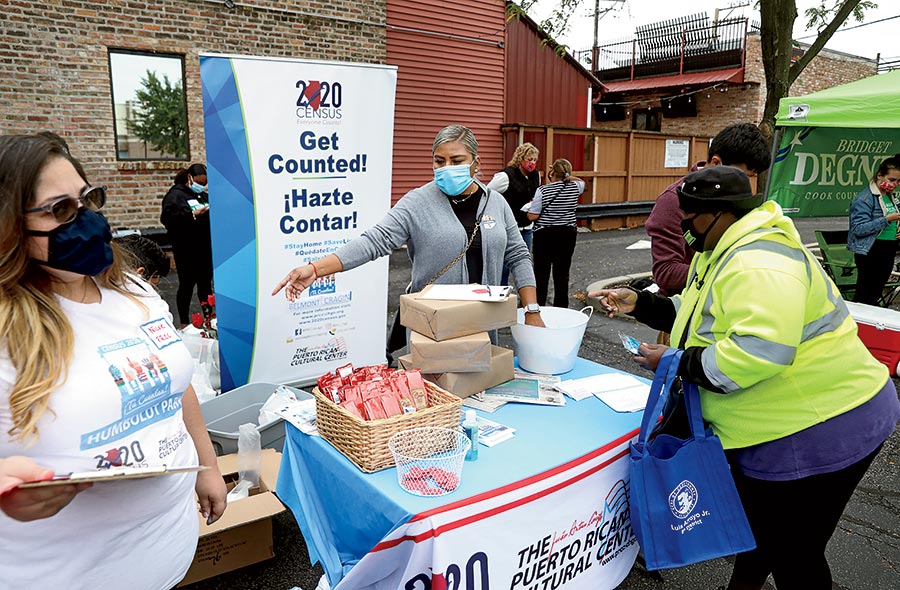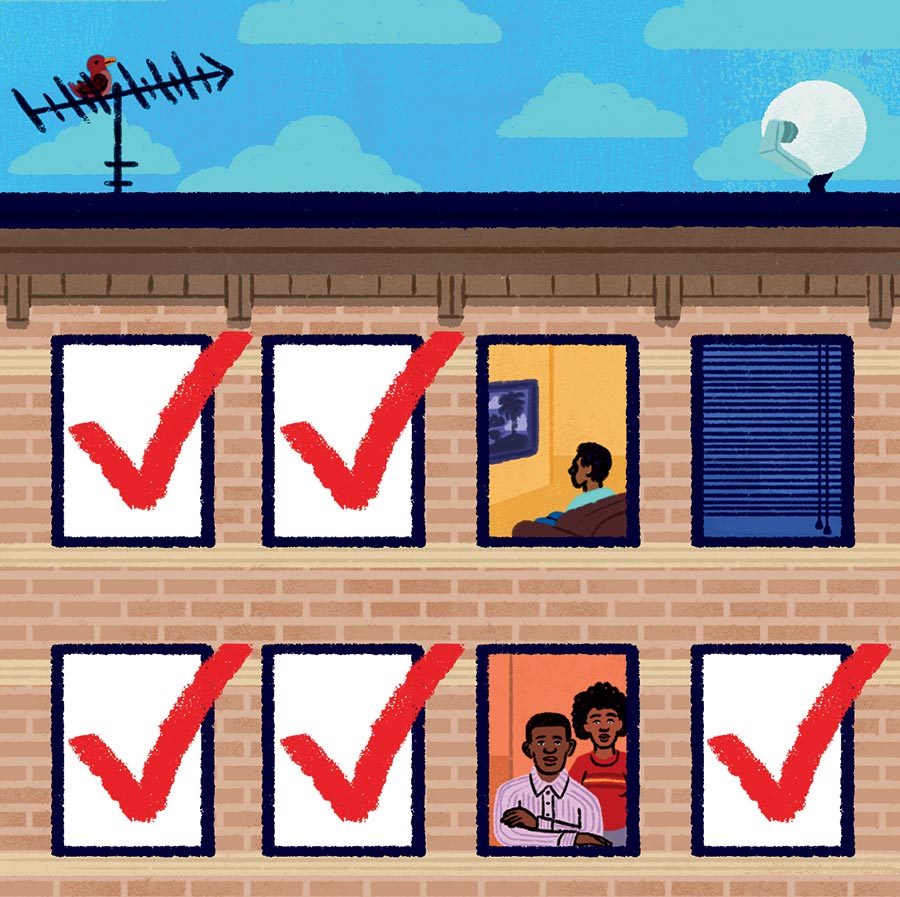As an enumerator for the 2020 census, I developed tricks for counting people who didn’t want to be counted.
“We’re not interested,” a man on Pratt Boulevard in Rogers Park told me before shutting the door in my face.
OK. It seemed like he was Latino and in his 30s, so I had an ethnicity, a gender, and a (rough) age. “We’re” meant there was more than one person living in the apartment. On the iPhone I’d been issued for filling out census questionnaires, I marked the population count as two, the most I could verify. Two is better than zero when every person means $1,535 in federal funds.
In many ways, the 2020 census was a success for Illinois. Our self-response rate — the number of residents who filled out the form on their own — was seventh in the nation, at 71.4 percent. Some of that can be attributed to the $29 million the state distributed to outreach and education efforts. Representatives from community organizations visited grocery stores, parks, and L stops with iPads so the uncounted could fill out a form online. Chicago did its part, too, enlisting the Dreadhead Cowboy to ride his horse through low-response neighborhoods, and planting yard signs asking residents to “Take a Second for Your City.”
In many immigrant and minority communities, though, participation in the census was down compared with 2010 — a problem that advocates blame on the coronavirus pandemic, plus the Trump administration’s unsuccessful attempt to place a citizenship question on the census form and its bid to exclude undocumented immigrants from the final count. Those factors made traditionally hard-to-count populations even harder to reach.
Take Census Tract 3007, which lies along 26th Street in the Mexican American neighborhood of Little Village. According to the City University of New York’s map of hard-to-count tracts in the 2020 census, 47.2 percent of its residents self-responded to the census in 2010. Last year, only 40.7 percent did.
That drop-off is “a direct result of the fact that the immigrant communities have been under siege during the Trump administration,” says Anita Banerji, director of the Democracy Initiative at Forefront, a Chicago-based network of nonprofit organizations. “And with the COVID crisis hitting the Black and brown communities hardest, the census was not top of mind. So those were not accurate counts by any stretch. The communities of color are definitely going to be undercounted.”

As an enumerator on the nonresponse follow-up team, my job was to visit households that hadn’t returned a census form. My beat was Rogers Park and Evanston. Working both sides of Howard Street, the border between the two areas, gave me a good look at how low-income communities are less eager to participate in the census than the wealthy and well educated, and how those differing attitudes reinforce existing inequalities in society. In Rogers Park, if I could get past the buzzers and into the worn-out three-flats and courtyard buildings, the nonresponders I met were usually immigrants — from Mexico, of course, but also from Nicaragua, Nigeria, Romania, Ethiopia, Russia, and Vietnam, to name a few of the nationalities I recorded. Many didn’t understand the purpose of the census, but most cooperated once I flashed my government ID. There were refusers, though, such as the Latino man on Pratt Boulevard, and it was difficult to persuade people to serve as proxies for neighbors I couldn’t locate. “You’re going to have to ask them,” I heard over and over.
In Evanston, the self-response rate was higher — more than 80 percent in some neighborhoods, an improvement over 2010 — so I had fewer addresses to visit. Since we were supposed to determine who lived at an address on April 1 — Census Day — my biggest problem was Northwestern University students who had moved out in March, vacating the campus because of the pandemic. The new tenants usually gave me the number of the landlord, who provided the information. Neighbors helped, too. When I encountered a building on Dempster Street where no one was home, I asked four people sitting on a porch next door if they knew who lived there. They gave me the races, genders, and ages of the residents. Then they offered me water and reminded me that Evanston was so well counted because Evanstonians understood how the census benefited them. “Thanks for doing this,” the woman who handed me the bottle said. “The more you count, the more money we get here.”
Meanwhile, in Little Village and Pilsen, many residents were not only concerned about the citizenship question but also uncertain about how long they had to get their census count taken. Because of the pandemic, the start date for follow-up operations was delayed until July. Then the Trump administration went to the Supreme Court in mid-October and got the counting cut short, about two weeks before the planned end date.
“Even up until our very final events, we still had people coming in to fill out the census in Latino communities,” says Brandon Lee of the Illinois Coalition for Immigrant and Refugee Rights. “The confusion over the final date kind of just made it more difficult. It ended up where we missed counting some people.” (The Census Bureau insists it reached 99.9 percent of households. That doesn’t mean everyone, or even anyone, was counted in those households. Some were visited more than a dozen times without results.)
Immigrant and minority communities have always been hard to count. Former alderman Ricardo Muñoz, who represented part of Little Village on the City Council, once said that he knew his ward had a higher population than the census showed because of the amount of garbage its residents produced. In the 2020 census, though, the gap between rich and poor — and the federal resources and representation each will receive — may be greater than ever, even as it matters the most.





Comments are closed.